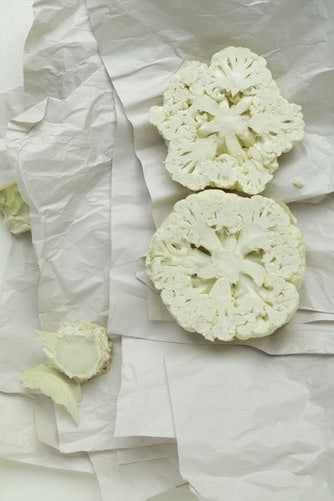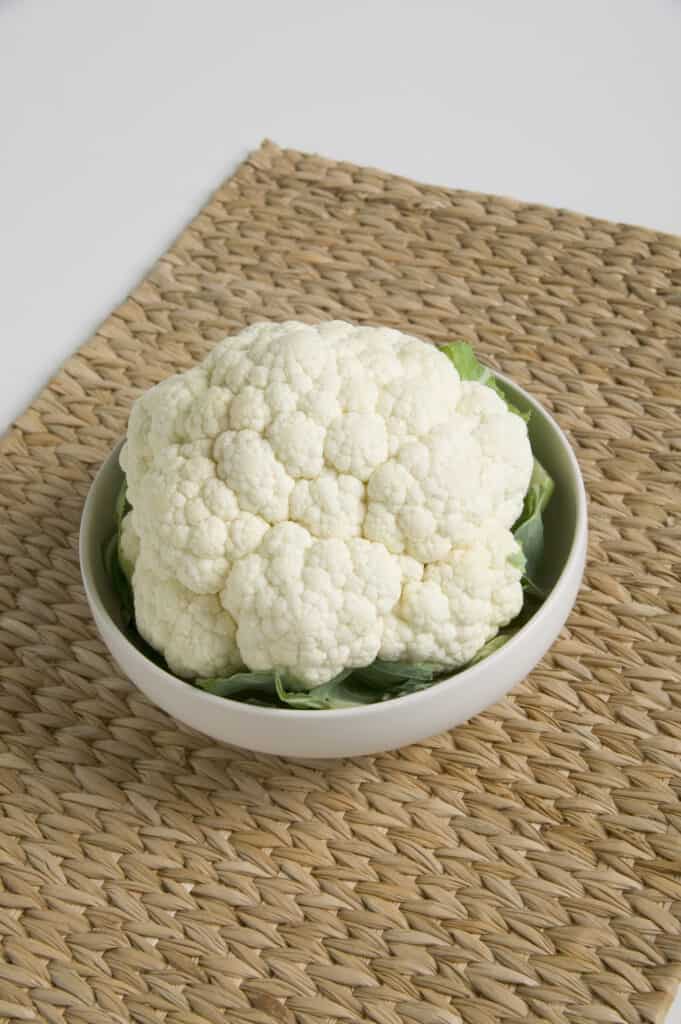As an Amazon Associate we earn from qualifying purchases.
Cauliflower is one of the best ways to start cutting down on carbs and calories in your diet. If you have ever had a side dish of cauliflower rice, cauliflower mashed potatoes, or had some buffalo or Manchurian style you know exactly what I mean.
Quick Navigation
How to Clean Cauliflower
Do not think you can get away with just washing cauliflower under the tap for a few seconds and drying it off. Cauliflower prep is a serious ordeal due to the porous nature of the vegetable and it’s growth proximity to the soil.

When it comes to cleaning cauliflower, I like to think of it in 2 big phases:
- Phase 1: Break the head down and rinse it
- Phase 2: Balance it in salt and acid to really make sure anything unsavory has died off
- Cut cauliflower into cauliflower florets
- Rinse the florets
- Boil enough salted water to cover the cauliflower florets
- Get a big bowl of ice, water, and lemon juice
- Boil the pieces for 2 minutes then immediately move it to the water
- Soak for 30 minutes
- Strain out the pieces with a slotted spoon
Materials Needed
- To properly prepare the whole head you will need a cutting board and a large bowl big enough to hold the cut pieces and place them in an ice bath.
- You will also need a large pot for the water and a paper towel.
- When it comes to straining out the cauliflower, you can use pretty much anything.
Step 1: Cut Up the Cauliflower
Because there are lots of little crevices underneath the crown you want to make sure you cut the cauliflower down with a sharp knife into smaller pieces (you may still cut them smaller later).
These smaller cauliflower pieces will be much easier to apply cold water and scrubbing to and will help you remove all the dirt and chemicals off the cauliflower.

Step 2: Rinse Under Running Water
By rinsing the florets under water, this will remove most surface debris. It will help you spot and remove any larger pests.
Step 3: Boil Water
- Next, boil enough water to cover the cauliflower.
- Add 1 tablespoon of salt to the water as it boils.
- Do not put the cauliflower in the water yet.
- I am going to blanch the cauliflower in a salty acidic solution.
Step 4: Prep a Bowl of Water
- While you are heating up a pot of water, you also need to prep a large bowl of water.
- Between the hot water, salt, acid, and cold shock I should be able to kill just about everything that could be living in or on the cauliflower.
- In a large bowl, add ice, water, and 1 ounce of lemon juice.
Step 5: Boil Cauliflower for 2 Minutes
When the water is boiling, add the cauliflower and boil for 2 minutes before immediately moving the cauliflower to the iced lemon water. The World Health Organization recommends 1 minute of boiling to kill 99.99%+ of bacteria in water.

Since there is a slight delay in heat transfer from a room temperature object to the boiling water, I will do 2 minutes to be on the safe side. This should not be enough time to cook your cauliflower (as you didn’t cut them any smaller than normal broccoli florets).
Step 6: Soak Cauliflower in Water for 30 Minutes
- Right after the cauliflower has been boiled for 2 minutes
- Soak it in icy lemon water for 30 minutes to stop the cooking process.
- Finally, I also have the acid from the lemon (while minimal, it can help disinfect to a smaller degree).
Step 7: Strain Out the Good Cauliflower
Once you’ve completed this step, you’re ready to cook your cauliflower and prep it for your meal!

Conclusion
Cauliflower is among the best substitutes for those wanting to reduce carbs, calories, or high glycemic index foods from their diet. Once you have mastered this preparation technique you will be well on your way to some of the best low carb and vegan dishes out there!
